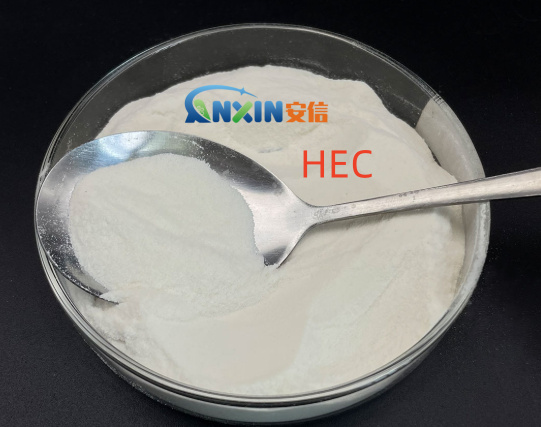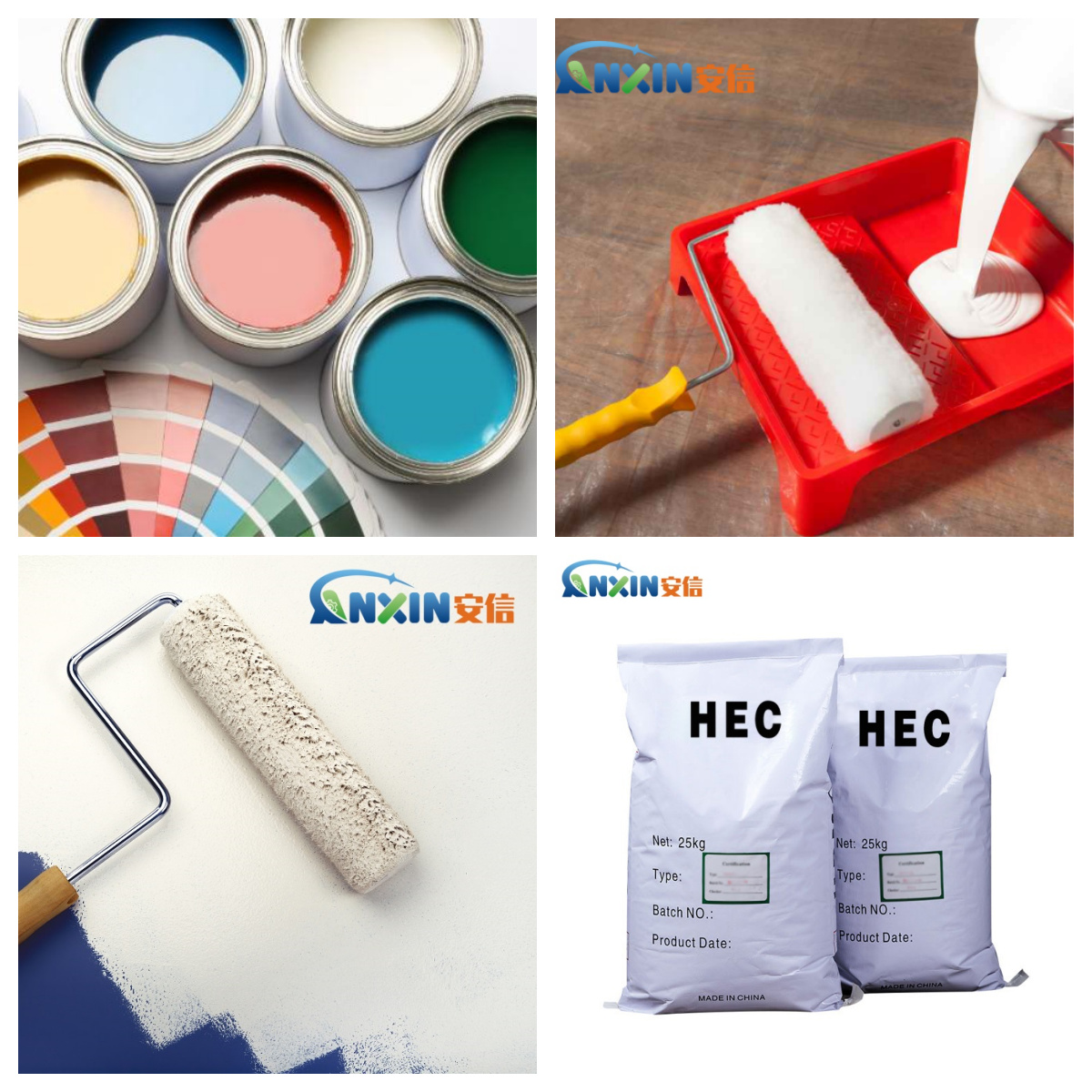Hydroxyethyl cellulose (HEC) is a non-ionic, water-soluble polymer derived from cellulose, commonly used as a thickener, stabilizer, and rheology modifier in water-based coatings. Its versatility, compatibility, and ease of use make it a critical additive in architectural paints, industrial coatings, and specialty formulations. Choosing the right grade and type of HEC is essential for achieving desired application performance, storage stability, and overall product quality.
1. Understand the Role of HEC in Water-Based Coatings
HEC performs several essential functions in water-based coatings:
Thickening: Provides body and viscosity to the formulation.
Rheology control: Adjusts flow behavior for optimal application and leveling.
Stabilization: Prevents pigment settling and phase separation.
Water retention: Enhances open time and film formation.
Compatibility: Interacts well with other formulation ingredients.
Because of these multifunctional roles, the selection of the appropriate HEC grade directly impacts the paint’s workability, appearance, and shelf-life.
2. Determine the Required Viscosity Grade
HEC is available in a wide range of viscosity grades, typically measured in a 2% aqueous solution at 25°C. Viscosity values can range from as low as 3,000 mPa·s to over 100,000 mPa·s.
Low viscosity (3,000–15,000 mPa·s): Suitable for applications requiring minimal thickening but improved flow and leveling, such as primers or sealers.
Medium viscosity (20,000–60,000 mPa·s): Balances thickening and application properties; ideal for interior wall paints and decorative coatings.
High viscosity (70,000–100,000+ mPa·s): Offers excellent sag resistance and pigment suspension; used in heavy-duty coatings or where higher build is required.
Tip: Select viscosity based on the shear conditions during application. For example, high-viscosity grades work well in roller-applied paints, while medium grades are better for sprayable formulations.
3. Assess Rheological Behavior and Shear Profile
HEC exhibits pseudoplastic (shear-thinning) behavior to varying degrees depending on molecular weight and modification. Understanding the desired rheology is key:
High shear viscosity (KU, ICI): Affects brush drag and film build.
Low shear viscosity (Brookfield): Influences leveling, sag resistance, and in-can feel.
In water-based coatings, an optimal balance of high low-shear viscosity (for anti-sag and suspension) and adequate high-shear viscosity (for good application) is desired.
For example:
HEC with flat viscosity profile: Suitable for spray or dip applications.
HEC with tailored rheology modifiers: Enables specific profiles like improved leveling or enhanced anti-spatter.
4. Consider Paint Type and Application Method
Different coatings require different HEC properties:
|
Coating Type |
Recommended HEC Grade |
Desired Properties |
| Interior wall emulsion | Medium to high-viscosity HEC | Good sag resistance, leveling, and workability |
| Exterior coatings | High molecular weight HEC with high salt tolerance | Weather resistance, storage stability |
| Industrial primers | Low to medium-viscosity HEC | Sprayability, anti-settling |
| Texture or thick build | High-viscosity HEC | Thickening, structural stability |
| High-PVC formulations | HEC with strong water retention | Pigment suspension, reduced splattering |
5. Evaluate Solubility and Dispersion Characteristics
HEC must be properly dissolved to ensure optimal performance. Some grades hydrate slowly to prevent lumping, while others offer instant solubility.
Standard HEC: Requires delayed hydration process; good for controlled addition.
Instant HEC (redispersible): Surface-treated to disperse easily and hydrate quickly; useful in cold-water applications or automated systems.
Choose instant HEC if fast production turnaround or easy processing is needed. However, note that improper dispersion can lead to fish eyes or gels in the final product.
6. Salt and pH Tolerance
Water-based paints often include electrolytes from pigments, fillers, or additives. HEC’s thickening performance can be influenced by ionic strength.
HEC is non-ionic: Generally stable across a broad pH range (2–12).
Salt sensitivity: Some HEC grades may lose viscosity in high-salt formulations.
If your formulation includes high levels of surfactants, preservatives, or pigments containing salts, opt for modified HEC grades with improved salt tolerance to ensure consistent rheology and storage stability.
7. Compatibility with Other Additives
HEC should be compatible with:
Dispersants (e.g., polyacrylates, phosphates)
Biocides and preservatives
Coalescing agents and plasticizers
Surfactants (non-ionic and anionic types)
If you’re using a complex formulation with many additives, test compatibility to avoid phase separation or viscosity drift over time.
8. Biological Resistance and Storage Stability
Since HEC is cellulose-based, it may be susceptible to microbial attack in aqueous environments. Choose biocide-treated or preserved HEC to reduce degradation risks.
Preserved grades: Include in-can preservatives for long-term stability.
Unpreserved grades: Require addition of external preservatives in the paint formulation.
Ensure appropriate storage of HEC powder and paints containing HEC to prevent microbial spoilage, which can lead to viscosity loss, odor, and poor film properties.
9. Cost and Performance Balance
While HEC is cost-effective compared to other rheology modifiers, the final choice should reflect cost-in-use rather than price per kilogram.
Higher-viscosity HECs may allow for lower dosages, and certain modified grades can eliminate the need for secondary additives. Factor in ease of processing, reduced waste, and longer shelf-life when evaluating overall value.
10. Supplier Support and Quality Consistency
Partner with reputable HEC suppliers who provide:
Consistent batch-to-batch quality
Technical support for formulation optimization
Regulatory documentation (e.g., REACH, ISO, biocide status)
Customization options (e.g., tailored viscosity, dispersion rates)
Reliable sourcing ensures reproducible performance, crucial for industrial-scale paint manufacturing.
Choosing the right hydroxyethyl cellulose for water-based coatings requires a thorough understanding of viscosity needs, rheology profiles, application methods, and formulation characteristics. From viscosity and salt tolerance to dispersibility and microbial stability, HEC selection directly influences coating performance, user experience, and product longevity. Always test different grades in actual formulations and work closely with suppliers to ensure the best match for your application goals.
Post time: Jul-15-2025

